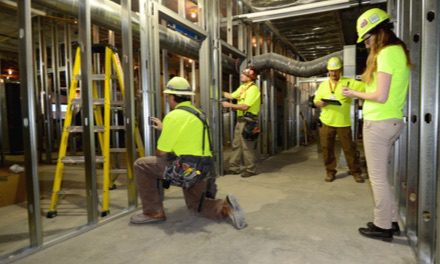The Occupational Safety and Health Administration recently implemented a new silica standard that creates stricter permissible exposure limits for construction. While silica standards are nothing new, contractors must now meet a stricter standard.
What is silica?
Also known as silicon dioxide or SiO2, silica is a chemical compound made up of silicon and oxygen. Made of the most common elements on earth, the abundant compound makes up 59 percent of the earth’s crust. Silica is all around us, from construction materials to industrial applications, and the compound is naturally present in plant-based foods. The most common form of silica is quartz, which is used extensively in construction.
Why is it a concern?
Despite the prevalence of silica in our environment, if crystalline silica dust is inhaled, it can cause significant adverse health effects. The health concerns surrounding silica dust have been long known, with regulations by the Occupational Safety and Health Administration since OSHA’s inception in 1971. Respirable particles can penetrate the lungs and cause disabling and sometimes fatal diseases, including silicosis, lung cancer, as well as kidney disease. Common occupational construction tasks—using masonry saws, jackhammers or other tools used to chip, cut or grind certain materials—can create a silica dust hazard.
How is Hagerman addressing the new requirements?
Hagerman maintains safety as a core value, considering the wellbeing of both our team members and the general public who might cross paths with construction activity. Both employers and employees are responsible for identifying potential silica hazard sources and limiting silica dust exposure on the construction site. Knowing that stricter OSHA requirements were forthcoming, The Hagerman Group increased our planning, training and education on the topic long before the requirement changed.
The biggest cause for alarm on the job site as it relates to respirable crystalline silica is when there is a visible dust cloud. While protective masks and respirators are effective in filtering airborne particles, the ideal approach—if possible—is to “engineer out” the dust cloud, planning construction methods that significantly reduce the amount of silica dust created in the first place. Many of Hagerman’s projects are renovations to buildings that remain operational during construction, so our focus includes users of the facilities. This approach not only protects the construction employer, it helps protect the public, as well. For building owners selecting a contractor for an upcoming project, how the construction company addresses silica dust and other safety concerns is an important consideration.


